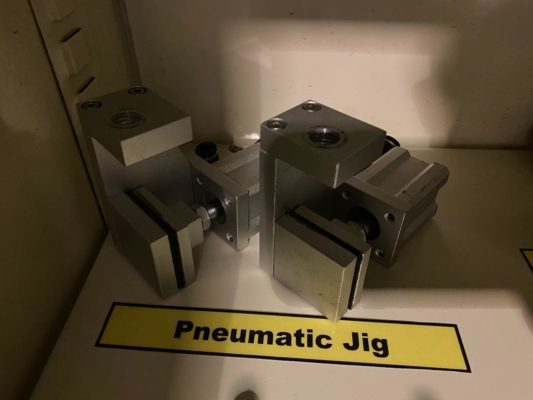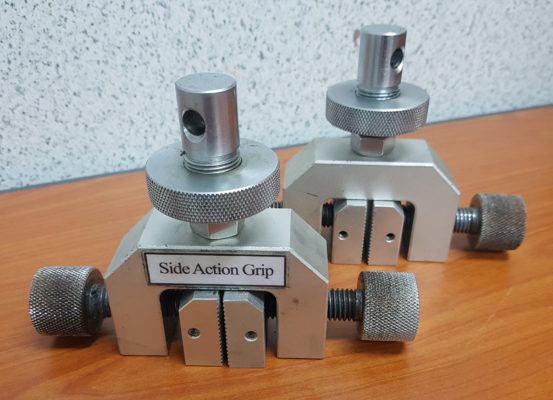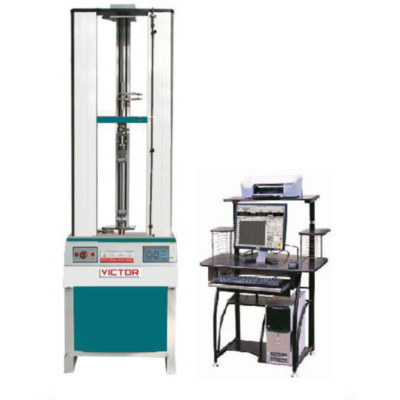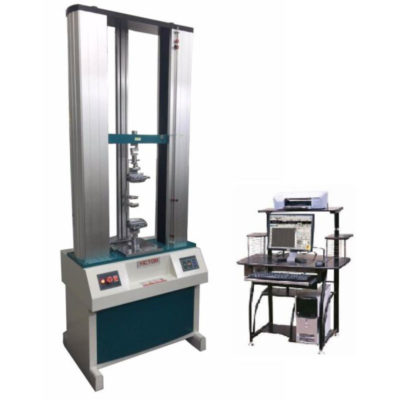ASTM is an international standards organization that is located in the United States of America. The purpose it was introduce to the industry is to publish technical standard agreements for various materials, product, systems and others. Among the ASTM standards that are often use in the industry is ASTM D3163.
ASTM D3163 Test Standard
Description For ASTM D3163
ASTM D3163 is an international test standard design for determine the strength of Adhesively Bonded Rigid Plastic Lap-Shear Joints. This test method is useful, for generating comparative shear strength data for joints made from a number of plastics. It can also provide a means by which several plastic surface treatments can be compare. Appropriate grips capable of accounting for the vertical offset cause by the lap-joint must be use to ensure accurate shear test results.
Specimen For ASTM D3163
- Plastic
Grips For ASTM D3163
- Pneumatic grips

Pneumatic grips are excellent fixture choices for this standard. This type of grip is adjustable in order to offset the jaw faces and ensure that the lap joint remains center in the grips, and the feature quick-change jaw faces that can be easily change to accommodate different materials.
2. Side action grip

Suitable to test fabric, textile webbing, metal, film, rubber and plastic
Type of UTM machine
We recommend using UTM machines with a capacity of 2kN-20kN. it depends on the strength of the plastic or film. We also recommend using smaller machines such as dual-column types
- VEW 2307
VEW 2307 Desktop microcomputer-type tensile testing machine is design by our company which is made of aluminium, it is not only small, used widely, do not take up space, nice appearance, but also easy to move with the hoop, it is very convenient to operate.
- It is controlled by computer and printing out the testing report; the outward appearance use the closing board dealing with high-level baking varnish, which obviously elegant
- It especially suitable for controlling quality in the production line, this series of machine is mainly apply to test the non-metallic and metallic materials which the load is less than 2KN
2. VEW 2308
The machine is design by mechanical-electrical integration, the composition of the force-measuring Sensor, transmitter, microprocessor, mechanism of load drive, computer and color inkjet printer. The high-precision electronic motor can be set to five-speed, the components are connect by plug-way, Floor-standing models, it is taken account of modern industrial design and ergonomics in modelling and Coating. It can be tested with all the materials in the stretch, compression, bending, shear, embedded relay, Peeling. tearing, crack, etc, such as rubber, plastics, leather, metal, nylon wire, fabric, paper, aerospace, packaging, construction, petrochemical, electrical, vehicle, etc.
The implementation of standards and standard configuration:
- GB/T4689.20-1996 Measuring fastness of leather’s adhesion
- QB/T2710-2005 Measuring leather’s expansion and the rate of elongation
- QB/T2711-2005 measuring tear force of leather
- QB/T2712-2005 measuring leather’s strength and stretch of spherical crack test
More: https://www.victortestingmachine.com/products/universal-testing-machines/
Test Procedure
- Prepare the surface of the plastic specimens, then cut the specimens as direct according to the standard.
- Apply adhesives to the specimens according to the manufacturers’ recommendations.
- Insert each end of the specimen into appropriate grips of a tensile testing machine, and tighten while ensuring the vertical offset is accounted for.
- Load the test specimen at the specified stress-rate to move the rigid plastic specimens in opposite directions until failure.
- Record the maximum stress and type of failure.
Measurements
- Maximum Stress
Check out our other blogs:
-
ASTM D412 Test Standard
-
How To Differentiate The Pros and Cons Of The Universal Testing Machine
-
ASTM D2256 Test Standard


